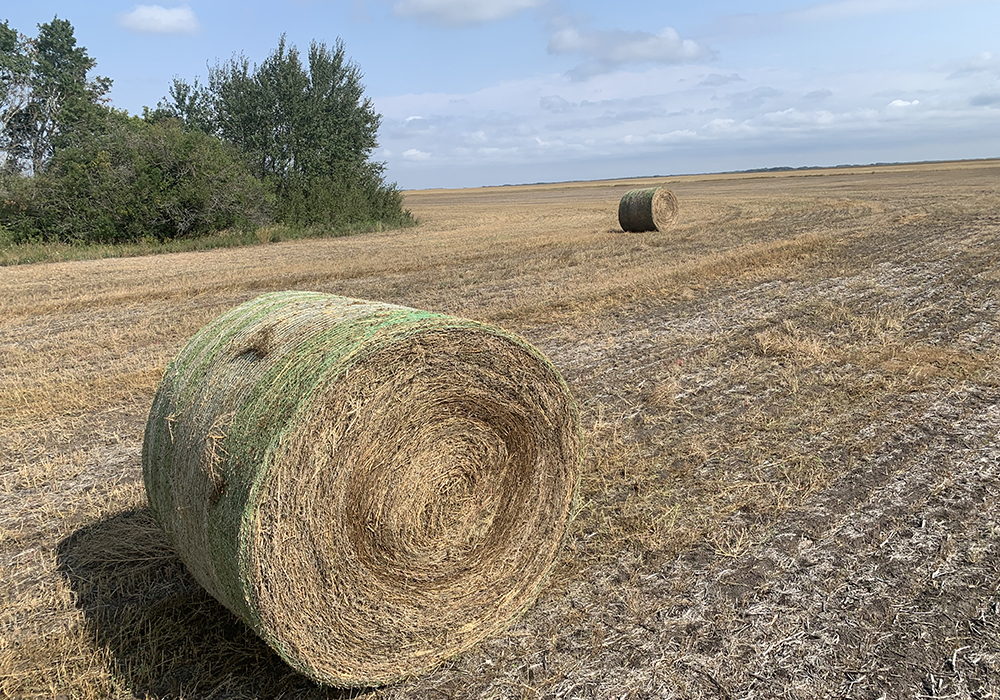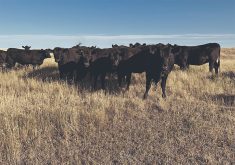Alternative forages will be available this winter as traditional feed remains in short supply, but many come with red flags
The 2001 drought is similar to 1988. Rain right now will not mitigate the impact. Cattle producers are searching high and low for whatever feed their cows can tolerate this winter.
It’s not a year to be thinking profit. It’s a year to be thinking survival. Finding and delivering an alternative feed is the first challenge.
The second challenge is figuring out how to use novel nutrition substances, an area with which Bart Lardner is familiar.
Lardner, beef nutrition specialist with the University of Saskatchewan, is recognized across the Prairies as an expert in beef nutrition.
Read Also

Beef cattle more prone to trace mineral deficiencies
The trace mineral status of our cows and calves is a significant challenge for western Canadian producers and veterinarians.
“Most of the alternate forages have little red flags sticking up. High nitrate levels will be a problem in just about all of them,” said Lardner. He stressed that testing must be carried out on all new feed.
At the extreme, annual kochia may sound far-fetched as a feed source, but Lardner said farmers should consider such options. It must be used with caution because it’s high in oxalate accumulations, sometimes as much as six to nine percent. Oxalates tie up calcium.
Lardner said he expects some canola to be baled for greenfeed, but more often salvage canola is grazed. He’s not a big fan of grazing salvage crops, he added. Cattle get more nutrition if the salvage crop, whatever it might be, is baled and saved for winter feed.
“The objective this year is for your cows to consume as much as possible of what’s available. That doesn’t happen with grazing. Grazing leaves too much behind.”
He said baling makes the best use of the material and gives producers better control.
Lardner said he’s starting to work with hybrid fall ryes available from FP Genetics. He said he has always favoured fall rye over triticale and winter wheat because it’s more competitive with weeds, and it serves as a biennial. The recent hybrids enhance that advantage. Under normal circumstances, they can provide three grazing seasons.
“In normal years, you seed rye after your other harvest is done. Then we typically expect to get some rain to get that crop up and growing. That’s the time to do some fall grazing. If you get an inch or two of rain going into winter, the crop should overwinter, then go in for spring grazing with your cow-calf pairs. And maybe get a late summer grazing after the grain or forage has been harvested. That’s three grazing events on a single crop.”
Invasive weeds in feed is another topic on Lardner’s mind.
“There are toxic plants that always show up in drought conditions. This is when they rear their ugly heads. Some of these are obvious and quite identifiable. We’re all trying to cut and roll up anything that looks like cow feed, so we’re baling sloughs and ditches. That means there’s going to be a lot of unwanted plants getting rolled up.
“The obvious one is water hemlock, which is deadly. The wild vetches can appear. Stinkweed is a nasty one. Same with lambs quarters, which are high in nitrates. But there are a lot of riparian plants you find in and around sloughs which are nutritious and safe for animals such as dandelions.”
Ammoniating the bales doesn’t reduce toxicity, said Lardner. Ammoniation does increase the protein content of low-quality forage. The other reason is that a producer will ammoniate high moisture bales if they start to heat. He recommended working with an agrologist if unsure about feed safety.
“I had issues in the past myself when I rolled up hay and ended up with a whole lot of stinkweed. We hadn’t taken care of the weed pressure before we seeded that hay field, and so we paid the price.”
















